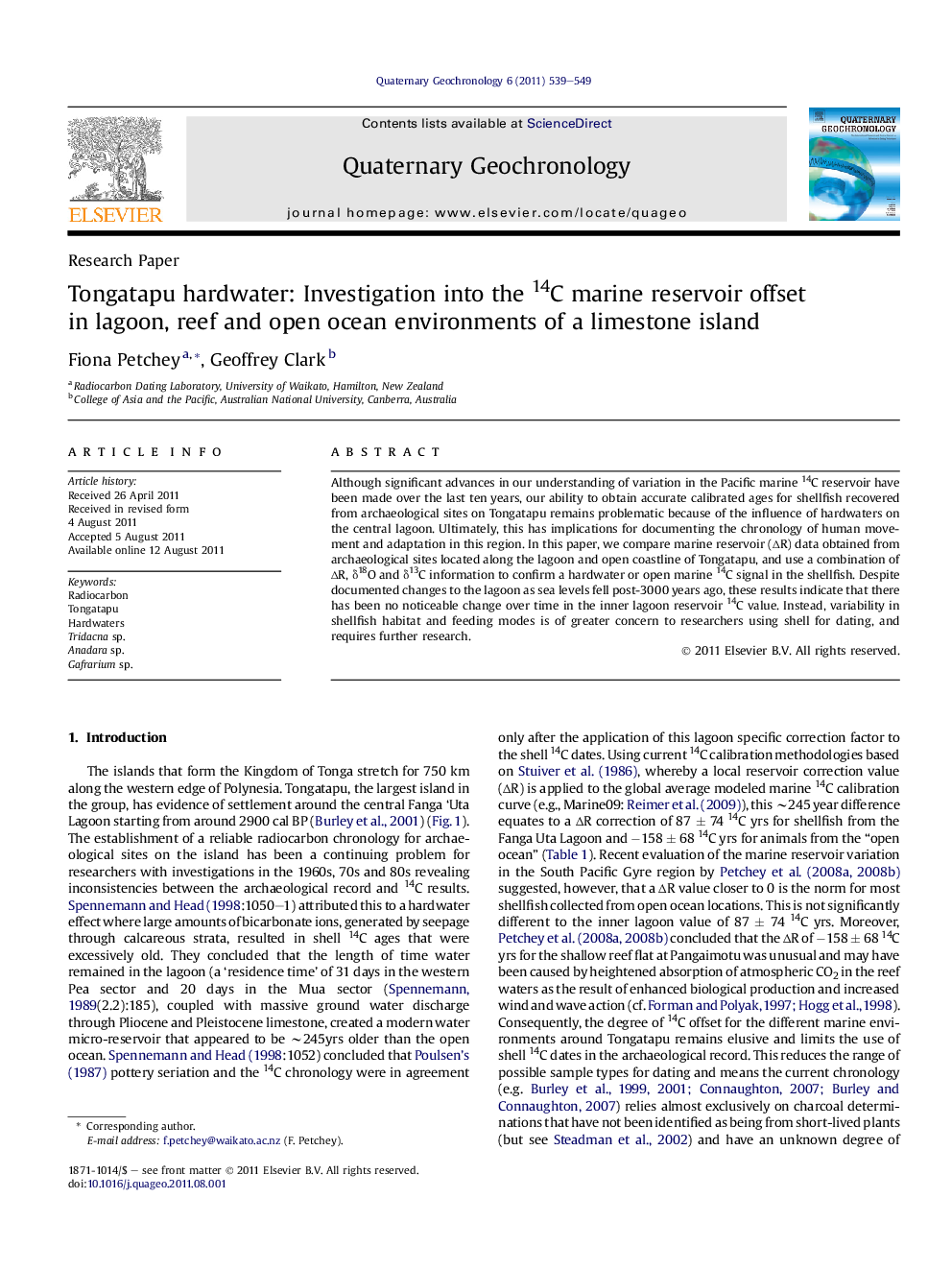| Article ID | Journal | Published Year | Pages | File Type |
|---|---|---|---|---|
| 4725163 | Quaternary Geochronology | 2011 | 11 Pages |
Although significant advances in our understanding of variation in the Pacific marine 14C reservoir have been made over the last ten years, our ability to obtain accurate calibrated ages for shellfish recovered from archaeological sites on Tongatapu remains problematic because of the influence of hardwaters on the central lagoon. Ultimately, this has implications for documenting the chronology of human movement and adaptation in this region. In this paper, we compare marine reservoir (∆R) data obtained from archaeological sites located along the lagoon and open coastline of Tongatapu, and use a combination of ∆R, δ18O and δ13C information to confirm a hardwater or open marine 14C signal in the shellfish. Despite documented changes to the lagoon as sea levels fell post-3000 years ago, these results indicate that there has been no noticeable change over time in the inner lagoon reservoir 14C value. Instead, variability in shellfish habitat and feeding modes is of greater concern to researchers using shell for dating, and requires further research.
► We examine the marine 14C reservoir around Tongatapu. ► A hardwater effect is identified in the lagoon. ► 14C value of shellfish varies with species habitat preferences. ► Absorption of atmospheric CO2 influences the 14C value of Tridacna sp.
